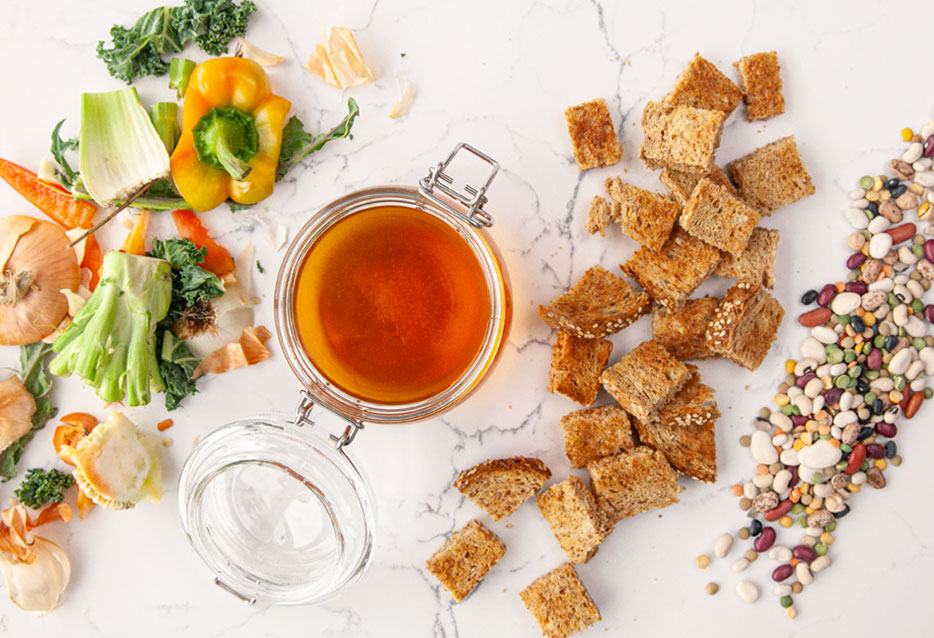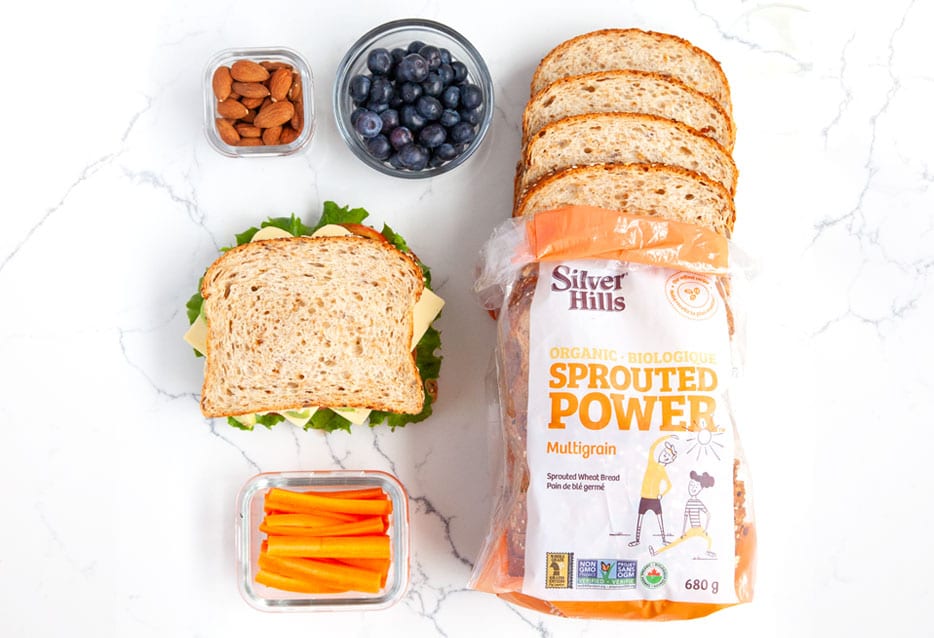Article What You Need to Know About the New Canada Food Guide
February 26, 2019

Goodbye, pyramid. So long, rainbow. Hello, dinner plate. In their refreshing late-2019 redesign, Health Canada revealed a very clear picture of what a balanced, healthy meal looks like. What does this mean for you and your family? We’re breaking down the top points in the new Canada Food Guide.
The New Plate: A Variety of Healthy Foods
We couldn’t be happier to see half of the updated Food Guide plate occupied by fresh fruits and vegetables, a quarter designated for whole grains, and a quarter reserved for protein. It doesn’t just de-emphasize the four food groups that debuted in 1977, which were heavily focused on meat and dairy. It helps people understand that plant-based protein is a fantastic option (our choice for protein fuel!).
The updated Food Guide emphasizes whole grains as an important source of fibre, vitamins, and minerals.Whole grains are linked to many health benefits, and Canadians don’t get enough of them1. This is why the guide brings whole grain goodness to our attention. It clearly shows what healthy whole grains look like, from quinoa to whole grain pasta and bread. Any of our Sprouted Power™ breads, buns, or bagels are a great option to fill this requirement. Our sprouted whole grain bread is Whole Grain Council certified. Our packaging shows how many grams of whole grains your family is enjoying per slice (and per serving) to help everyone consume whole grains easily and deliciously every day.
The guide also suggests water as the drink of choice to stay well hydrated, since sugary sodas and fruit drinks were the main source of total sugars in Canadians’ diets, especially among children and adolescents.
This plate design does away with serving sizes and steps away from portion recommendations, two things that Health Canada cites that Canadians found difficult to comprehend and complicated to use.
The takeaway? Make sure your meals and snacks include plenty of fresh produce and supporting protein and whole grains. Want some meal inspiration? Check out our recipes for some beautifully balanced eats.
Healthy Eating is a Daily Practice
The online guide speaks to healthy eating being more than just what you put into your body. Health Canada recommends being mindful of your eating habits by cooking more often, taking time to really enjoy your food, and sharing meals with others. The guide also encourages Canadians to really tap into their senses during a meal. That means paying close attention to smell, taste, and texture of your food. And turning off distractions (like screens) during meals. Sharing meals with others is a really great way to find connection at work, with friends, and with our families. Health Canada hopes these practices will help people be more aware of what they eat, when, and why. Ideally, this mindful approach will help prevent overeating, stress eating, and deter people from consuming too many processed foods.
Food Labels and Misleading Food Marketing
The Food Guide encourages Canadians to get used to reading product labels on anything that isn’t fresh food. They want to help us identify non-beneficial ingredients, including high levels of sodium, sugars, and saturated fats. Health Canada believes becoming familiar with ingredients will help people compare and choose products more easily. And be able to choose products with more of the nutrients they need.
This point in the Guide complements upcoming changes to Canadian food labels that will roll out over the next four years (2019 – 2022). These include changes to the serving size that better reflect the way Canadians intuitively eat. You’ll see this on our new products’ packaging and on all Silver Hills Sprouted Bakery bread packaging by the end of 2021. What will that mean? The new serving size and nutritional information will represent two slices of bread, instead of one (since most Canadians make two slices of toast or a sandwich).
Food marketing is another item Health Canada addresses in the updated Canada Food Guide. They want Canadians to understand how marketing can influence their food choices—particularly when it comes to foods and drinks that “contribute too much sodium, sugars or saturated fat. Food marketing can appear on any media channel (TV, radio, print, social media, video, online ads, etc.), or as product placement in our favourite shows.
Steer Clear of Added Sugars and Processed Foods
The new Canada Food Guide makes clear that highly processed foods and drinks are not part of a healthy eating pattern and can increase the risk of chronic disease. The update specifically calls out sugary drinks (even 100% fruit juices), chocolate and candy, ice cream and frozen desserts, fast food, frozen entrées, high-sugar bakery items like cakes, and processed meats.
However, as the updated food guide points out, some types of processing can be beneficial. Home drying or dehydrating (try some dried apple slices), canning (pickled beets, carrots, beans, etc.), and freezing (frozen veggies can make weeknight meal prep a breeze) are healthy ways to enjoy fruits and vegetables all year long. The emphasis here is to make homemade versions and healthy swaps of your favourite snack foods.
Check out all our Sprouted Power™ foods to add some healthy sprouted whole grains to your family’s plate.



